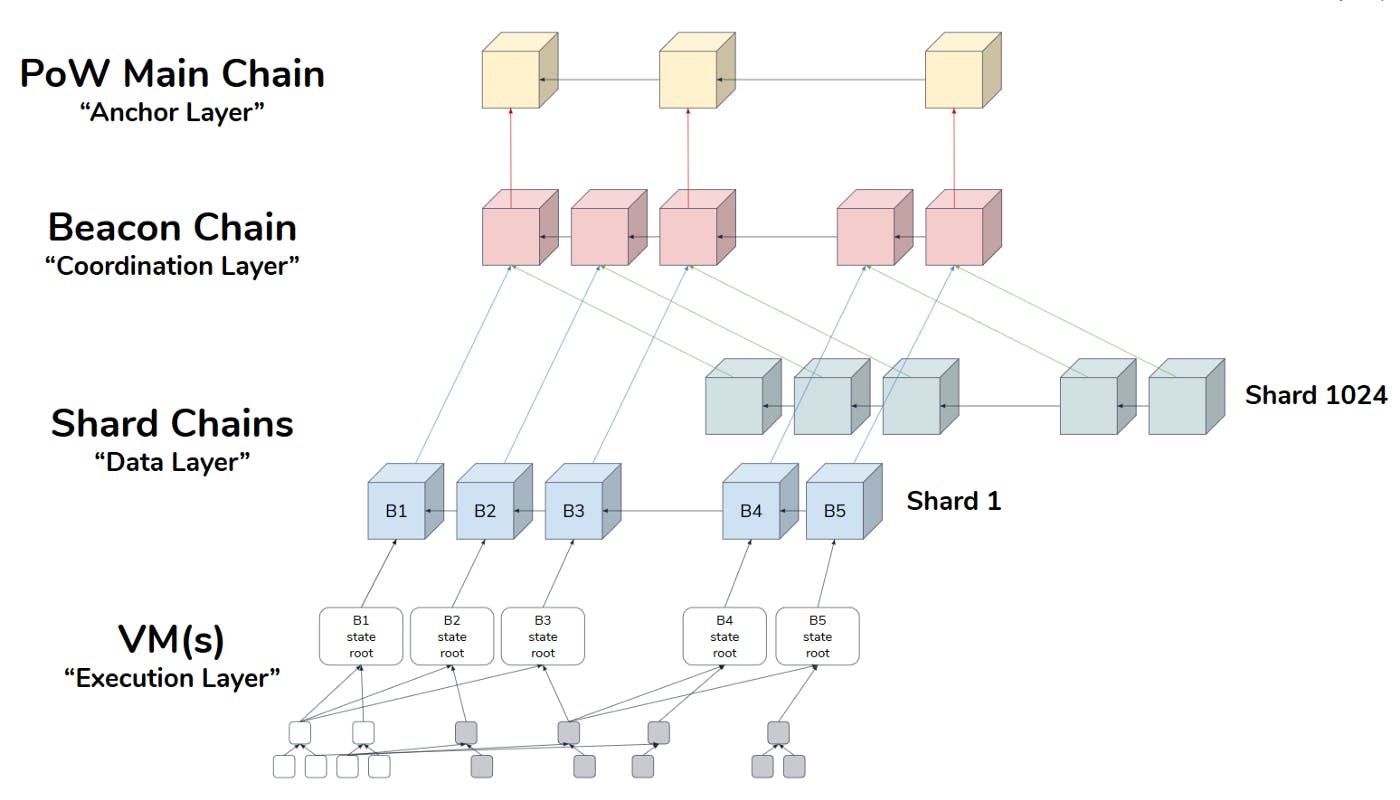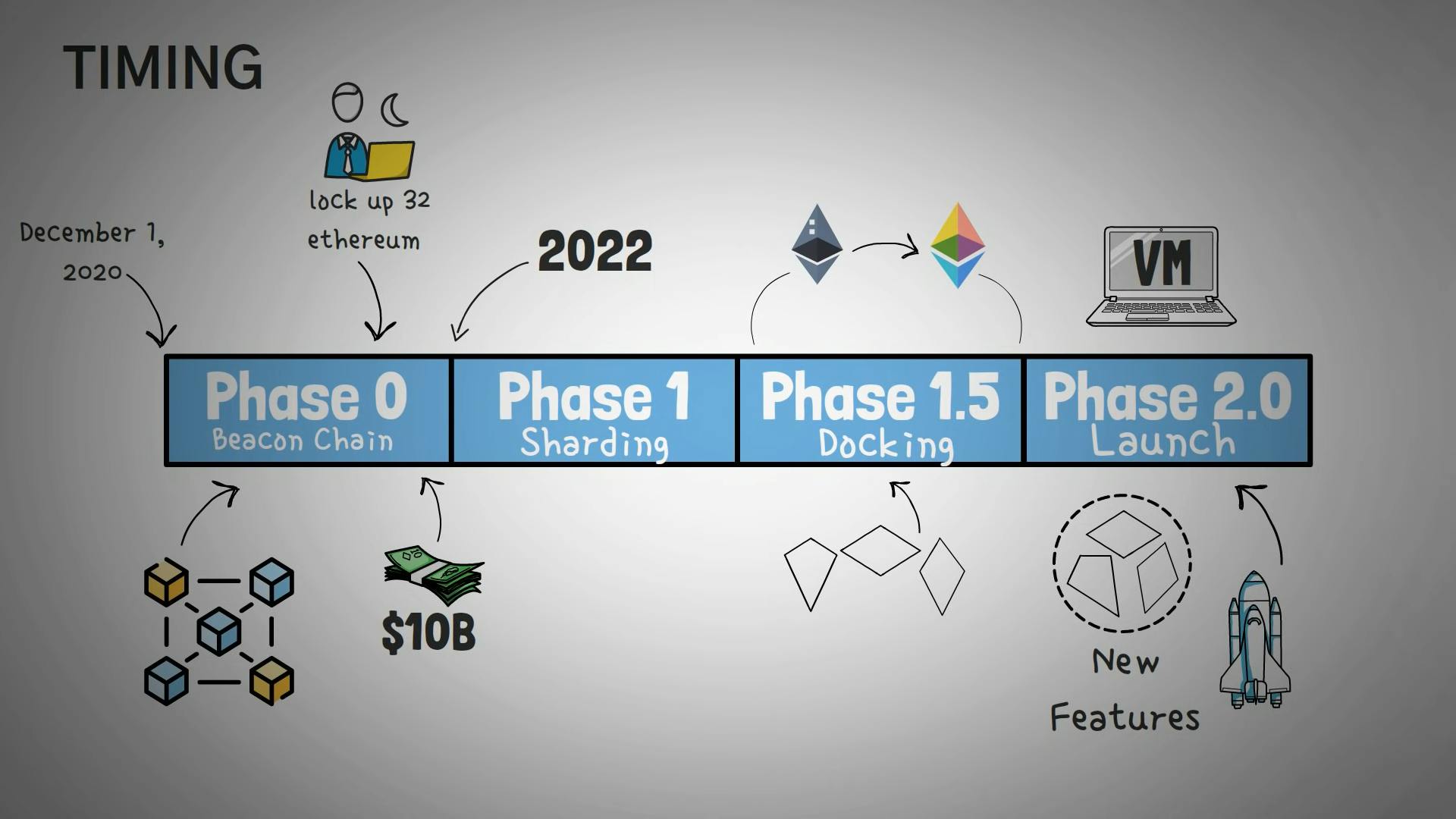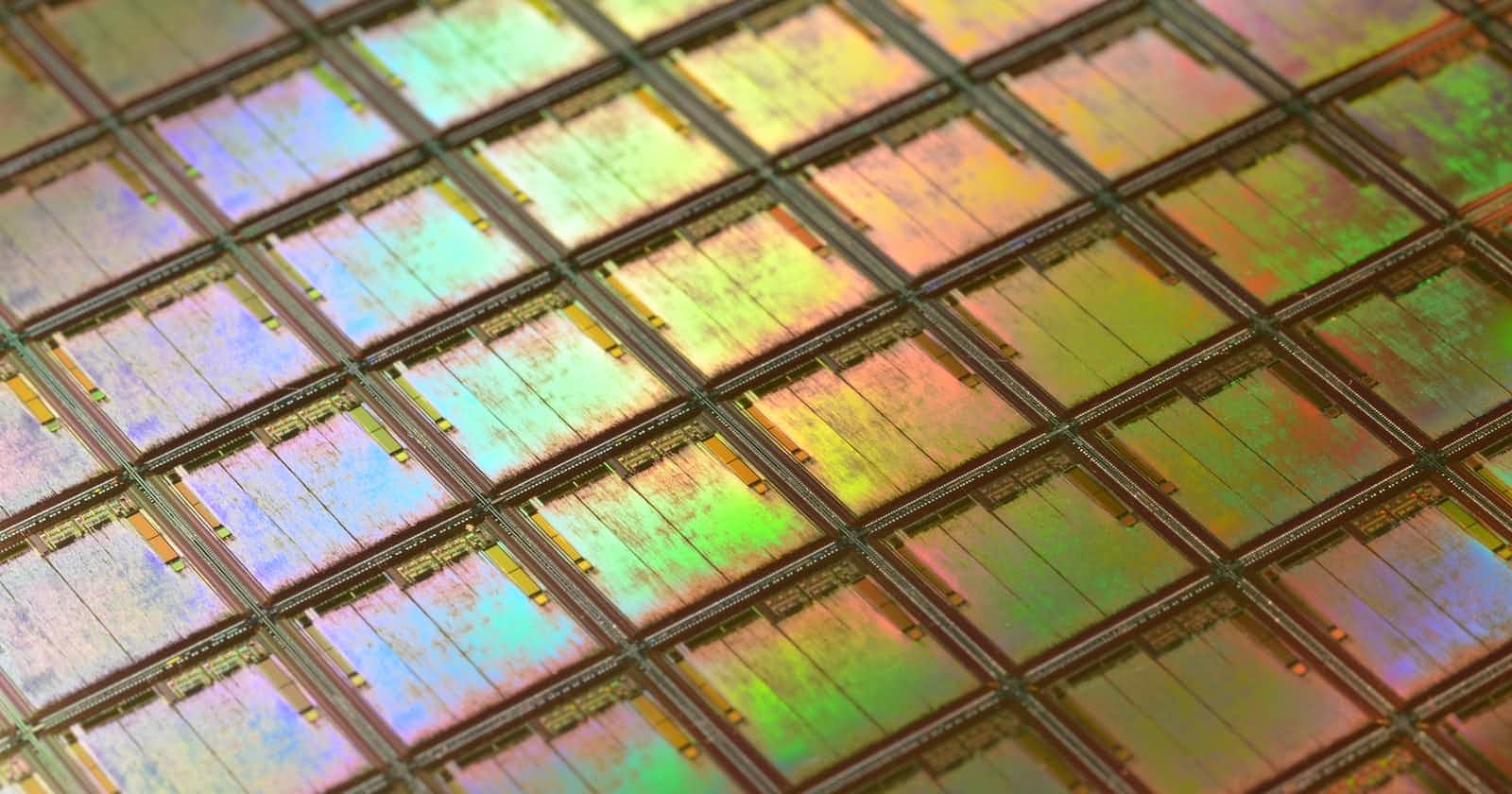Have you been wondering what is the beacon chain and shard chains in blockchain? Do you know how are they useful? In this article, we would explain each term which will help you to understand it easily.
Beacon chain
Phase 0 of ethereum upgrade
The beacon chain is the backbone and also the heartbeat of the future of Ethereum because the beacon chain has introduced the much-awaited proof of stake consensus method to Ethereum which will make Ethereum scalable ,secure, and sustainable.
Beacon chain is a proof of stake mega blockchain that is now running parallel to the Ethereum mainnet . It is responsible for all the proof of stake-related coordination for Ethereum like tracking information about the validators, their stakes, their attestations (votes), and if some validators are found to be dishonest, to slash them (they lose some of their stakes). That's why it is called the coordination layer.
The beacon chain is the conductor coordinating all players of the proof of stake protocol and it manages the POS protocol for itself and all other shard chains.
The Beacon Chain is mission-critical and any bug in it could compromise the whole network. That's why it is released and now being tested, in other words, currently beacon chain is in its beta testing stage.
In order, to become a validator in the beacon chain you have to stake or lock up 32 Eth. And you will get rewards or you can be slashed also for being dishonest. If you want to deep dive and become an absolute pro you can read more about them from here and here

Sharding
Phase 1 of ethereum upgrade
Sharding is the process of splitting a database horizontally in order to spread the load.
For example, Let's think we are driving on a single-lane road so there will be traffic and congestion but if we drive on an eight-lane highway there will be no congestion and lesser traffic because the traffic will spread on multiple lanes.
Similarly Ethereum mainnet is now that single lane road due to which the drivers means the users are suffering from jams means low transaction speed ,slowness, and consequentially high gas fees.
So sharding is a way to change that single-lane road to a 64-lane road.
Read it again, single lane to a 64 lane , Isn't this awesome.
With sharding, we will get 63 more chains and after the merge, the ethereum mainnet will be one of the shard chains. In this way, the old data will also be secured and this in turn will make ethereum fast .
Sharding will also help to increase network participation because after sharding anyone will be able to run ethereum on a personal laptop or a phone.So more people will be able to participate, in a sharded Ethereum. This will increase security because the more decentralized the network, the smaller the attack surface area.
With lower hardware requirements, sharding will make it easier to run clients on your own, without relying on any intermediary services at all. And if you can, consider running multiple clients. This can help network health by further reducing points of failure.
It is being said that sharding will increase the speed of ethereum transactions to 100,000 transactions per second from the current limit 12 to 15 tps.

The Merge
Phase 1.5 of ethereum upgrade
Phase 1.5 is the merge in which the ethereum mainnet will become one of the shards and ethereum will fully move from the current proof of work to proof of stake consensus model.
And finally Phase 2 will be the launch of new and improved ethereum
The full roadmap of ethereum upgrade is given below.

At last, we can see that the future of ethereum is bright and we are looking forward to it .

